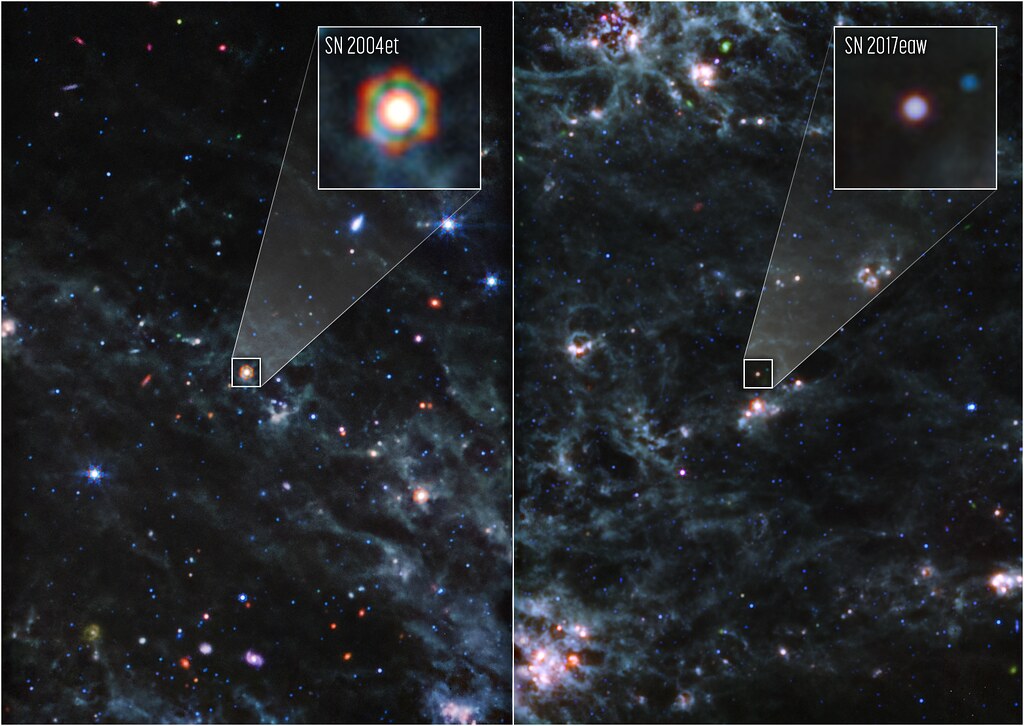NGC 6946: Exploring the Spectacular Celestial Pyrotechnics of the Fireworks Galaxy
NGC 6946, also known as ‘The Fireworks Galaxy’, is a stunning spiral galaxy that has captured the attention of both amateur and professional astronomers. Its beautiful pinwheel structure and sparkling stars make it a favorite among imagers, but its true value lies in its propensity to produce supernovae. In fact, ten supernovae have been observed within NGC 6946 in the past century, earning it its fitting nickname.
Located between the constellations of Cygnus and Cepheus, NGC 6946 can be a challenging target to locate visually. Its immediate surroundings lack bright stars, making it difficult to pinpoint. However, starting from the star Alderamin and then locating eta Cephei, observers can find NGC 6946 two degrees to the southwest. The galaxy is classified as an intermediate spiral galaxy and is one of the closest giant spiral galaxies beyond our Local Group, approximately 22 million light years away.
Despite its relatively bright catalogued magnitude of +8.9, NGC 6946 presents a challenge for smaller-aperture telescopes. The galaxy’s face-on orientation and low surface brightness make it appear as a uniformly-lit diffuse and faint halo. However, deep amateur images reveal the presence of H-II regions and young star clusters, indicating a high level of ongoing star formation. This may be one reason why NGC 6946 has been so prolific in producing supernovae over the years.
To fully appreciate NGC 6946, a telescope with a 150mm (six-inch) aperture is recommended for visual observation on a clear night at a dark-sky location. This will allow observers to see the galaxy’s faint halo. For those with a larger aperture telescope, there is a chance to glimpse some of the H-II regions that adorn the multiple spiral arms of NGC 6946.
After exploring NGC 6946, observers are in for a treat as the open cluster NGC 6939 is located just over half a degree to the northwest. This cluster is a much easier visual target and can be seen through any telescope. With an integrated magnitude of +7.8, NGC 6939 shines brightly due to the combined light of approximately 120-140 stars packed into an apparent diameter of 8′. On a good night, it can even be visible in finderscopes. The pairing of NGC 6946 and NGC 6939 makes for a great target for wide-field imagers.
Supernova hunters should take note of NGC 6946’s history of producing supernovae. Over the past century, ten supernovae have been observed within the galaxy, with the most recent being Supernova 2017eaw, discovered on May 14, 2017. This particular supernova was shining at around 13th-magnitude and was captured in an image taken soon after its discovery.
NGC 6946, with its captivating beauty and explosive nature, continues to fascinate astronomers and enthusiasts alike. Its position between Cygnus and Cepheus makes it accessible to observers across the UK during August nights. Whether through the lens of a telescope or the eye of an imager, NGC 6946 and its accompanying celestial wonders provide endless opportunities for exploration and discovery.
